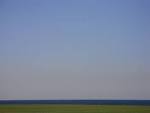 English and Belarusian environmentalists conducted an extensive review of the situation in the area of exclusion around Chernobyl and came to the conclusion that animals are returned to the infected site, which is currently more like a reserve than the epicenter of the largest technogenic catastrophe of the 20th century, according to a publication published in the journal English and Belarusian environmentalists conducted an extensive review of the situation in the area of exclusion around Chernobyl and came to the conclusion that animals are returned to the infected site, which is currently more like a reserve than the epicenter of the largest technogenic catastrophe of the 20th century, according to a publication published in the journal
"It is quite Possible that today the number of wild animals in the area of alienation is higher than it was before the conflict. This does not mean that the radiation favors the animal life, and just speak about the fact that hunting, poaching, clearing of forest for arable land and other types of human activity affect them much worse, " said Jim Smith (Jim Smith) from the University of Portsmouth (UK).
Smith and his colleagues showed that the numbers of most large mammals and other fauna of commissioners has recovered pretty quickly for the first 1-10 years after the accident at the fourth power unit of ChNPP, for nearly 20 years looking for state of the fauna in the area of alienation and in 4 Belarusian reserves, not contaminated with radionuclides.
Scientists conducted This research by checking the findings and hypotheses of other environmentalists, who claimed that the number of animals in the area of alienation remains at a low level and that the radiation is the main limiting factor in the return of the woodland fauna in the exclusion zone.
in two decades of observations of ecologists managed to make a lot of helicopter overflight exclusion zone, counting the animal tracks and those individuals whom they happened to see on the site, and studying other factors, such As epidemics and adverse weather of different rules that may affect the number of animals.
As shown by their observation that in reality things are different - in reality, the number of wild boars, deer, ROE deer, wolves and other large mammals decreased only in the 1st year after the disaster, and then began to increase, reaching old mark in a year or in 10 years. While populations of the same most animals rapidly decreased within the USSR and then Russia, Belarus and Ukraine.
currently, the number of them has reached record levels - for example, the number of wolves in the vicinity of the ChNPP is currently 7 times higher than in the Belarusian national parks and nature reserves. Something similar is observed and in populations of rodents and other small mammals.
All This, according to the authors, speaks about the fact that mammals and other animals in General capable of withstanding high level of radiation, while remaining healthy at the level of whole populations (but not individuals) if their life will not interfere the man, once again proved a major negative factor in the lives of wildlife.
"In the last 20 years I worked, studied and photographed the wonderful world of animals of Chernobyl. I am very pleased that our work has finally reached the ears of international scientific brotherhood, " - concludes Tatiana Deryabina, an ecologist from the Belarusian Polesye state radioecological reserve.
sections: Politics
|